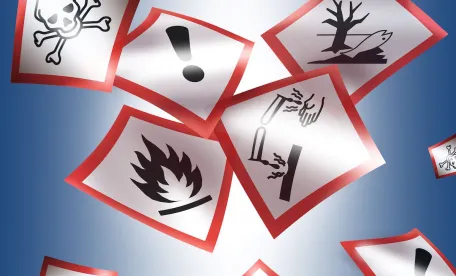On April 13, 2022, the Office of Environmental Health Hazard Assessment (OEHHA) issued a Notice of Modification to Proposed Regulation on Safe Harbor Warnings for Glyphosate and Addition of Documents to Rulemaking File (Notice). OEHHA first proposed this regulation by publishing a Notice of Proposed Rulemaking on July 23, 2021. OEHHA provided a 75-day comment period on the original proposal and its Initial Statement of Reasons (ISOR), including an extension to file comments until October 7, 2021. It held a public hearing on September 9, 2021.
Following its review of comments, OEHHA has determined modifications of the original regulatory text are needed. In addition, OEHHA stated it is relying upon additional documents in this rulemaking and is adding these documents to the rulemaking file. OEHHA originally opened a 15-day public comment period, running from April 13, 2022, through April 28, 2022, however, at the request of several stakeholders, OEHHA extended the comment period to May 5, 2022. Instructions for filing comments are set forth in the Notice. Consistent with the Administrative Procedure Act, OEHHA states it will only address comments received during this comment period that address the modifications to the text of the proposed regulation or documents added to the record. In the Final Statement of Reasons, OEHHA will respond to all comments received during the comment periods on the original July 2021 proposal and on the modified proposal.
Background
OEHHA’s proposal to adopt a new safe harbor warning regulation to address the content of warnings for exposure to glyphosate in consumer products is not without controversy. OEHHA’s initial listing of glyphosate as a substance known to the state to cause cancer was challenged in court. In the 2020 decision for National Association of Wheat Growers et al. v. Becerra et al., the District Court found that the Proposition 65 (Prop 65) safe harbor warning was false and misleading commercial speech under the First Amendment and enjoined enforcement of the warning requirement. More information regarding that decision is discussed in our blog. In addition, in 2019, the U.S. Environmental Protection Agency (EPA) issued a letter stating that it would not approve labeling that includes the Prop 65 warning statement for glyphosate-containing products and that any such warnings would be considered false and misleading and thus misbranding violations under the Federal Insecticide, Fungicide, and Rodenticide Act (FIFRA). Additional information regarding EPA’s determination is discussed in our blog.
In proposing Prop 65 warning language for glyphosate, OEHHA states in the ISOR (page 12) that the proposal is intended to take into account the ruling and concerns expressed by the District Court:
OEHHA’s safe harbor regulations are nonmandatory guidance. OEHHA does not have enforcement authority under Proposition 65 and thus cannot require warnings to be given for an exposure to any listed chemical, including glyphosate. The injunction in the National Wheat Growers case is still in effect. Therefore, no enforcement actions can be taken against businesses who do not provide warnings for significant exposures to this chemical. OEHHA does not intend to suggest otherwise by proposing this regulatory action.
OEHHA states further (ISOR page 15):
OEHHA has determined that a tailored safe harbor warning for significant glyphosate exposures from consumer products can provide clear and factual and information for the benefit of those who could be exposed. As discussed above, where no consumer product warning is being given under FIFRA for significant exposures to glyphosate, the safe harbor language provides content and methods that businesses can use to provide a warning if they choose to do so. Also, under OEHHA’s implementing regulations, a business that determines it must provide a warning for a worker exposure that is not required under FIFRA may use the proposed consumer product safe harbor content and methods to provide the warning, if appropriate. (Section 25606(a)).
Summary of Proposed Modifications
OEHHA is modifying proposed Section 25607.49, subsection (a)(3) as shown below. Additions and deletions to the proposed text are shown in double-underline (example) and strike-out (example), respectively.
(3) The words, “Using this product can expose you to glyphosate. The International Agency for Research on Cancer classified glyphosate as probably carcinogenic to humans. US EPA has determined that glyphosate is not likely to be carcinogenic to humans; other authorities have made similar determinations.
Other authorities, including USEPA, have determined that glyphosate is unlikely to cause cancer, or that the evidence is inconclusive.A wide variety of factors affect your potentialpersonal cancerrisk, including the level and duration of exposure to the chemical. For more information, including ways to reduce your exposure, go to www.P65Warnings.ca.gov/glyphosate.”
A copy of the full proposed regulatory text (new sections 25607.48 and 25607.49), reflecting the modification, is available here.
OEHHA states the proposed modifications are intended to address issues raised in the comments to the initial proposal by: (1) separating the description of the conclusion reached by EPA from the description of the conclusions reached by other authorities; (2) more closely aligning the description of the conclusion reached by EPA with the language EPA used in its conclusion; and (3) changing the modifier of the term “risk” in a manner that accounts for the diverging conclusions EPA and other authorities reached.
OEHHA states it also sought input from EPA on whether it could approve the warning language as set forth in this modified proposal, if a pesticide registrant requested approval to include such language on labels of products containing glyphosate sold in California. EPA responded that it could approve the proposed language. Specifically, with regard to its prior 2019 letter and the current warning language, EPA stated:
While EPA’s scientific conclusions regarding the glyphosate cancer classification have not changed since the August 7, 2019, letter to glyphosate registrants, it has determined that the new glyphosate-specific safe harbor language proposed in OEHHA’s recent letter is sufficiently clear regarding EPA’s position and thus would not be considered false and misleading. Therefore, this revised language could be approved by EPA if pesticide registrants requested it for inclusion on glyphosate product labels, and the products would not be considered misbranded.
OEHHA has added the correspondence with EPA referenced above to the rulemaking file as documents relied on for this rulemaking.
Documents Added to the Record
In the interest of completeness and in accordance with Government Code Section 11347.1, subdivision (a), OEHHA also has added to the rulemaking record the following documents to those it relies in this rulemaking:
-
U.S. EPA Office of Pesticide Programs, Label Review Manual, Chapter 7 Precautionary Statements (Revised Mar. 2018), Section IV Determining the precautionary labeling, Part A, Signal word, Section 4 Related information on Proposition 65 warnings, page 7-4.
-
OEHHA, letter from Lauren Zeise, Director, to Michal Freedhoff, U.S. EPA Assistant Administrator, Office of Chemical Safety and Pollution Prevention (Mar. 21, 2022).
-
U.S. EPA Office of Chemical Safety and Pollution Prevention, letter from Michal Freedhoff, Assistant Administrator, to Lauren Zeise, OEHHA Director (Apr. 8, 2022).
-
U.S. EPA Office of Chemical Safety and Pollution Prevention, letter from Michael L. Goodis, Director Registration Division, Office of Pesticide Programs, to registrants of products that contain glyphosate (Aug. 7, 2019).
Copies of these materials are available through the links provided above or here on OEHHA’s website.
Commentary
While the District Court decision enjoins enforcement of any Prop 65 warning requirement for glyphosate, OEHHA stated when it initially proposed the warning language for glyphosate that businesses are not enjoined from providing a warning if they choose to do so. Although OEHHA is proposing slight modifications to the warning language, these modifications do not squarely address the significant concerns raised regarding the initial proposal to the extent that the proposed warning, even as modified, could be considered false and misleading statements under the First Amendment and/or FIFRA. EPA’s April 8, 2022, letter indicates that OEHHA’s modifications to the warning language would be approvable as language that EPA does not consider to be false and misleading should a registrant propose it. If this regulation is approved, it appears that EPA would not reject any label amendments from registrants seeking to add the warning.




 />i
/>i

